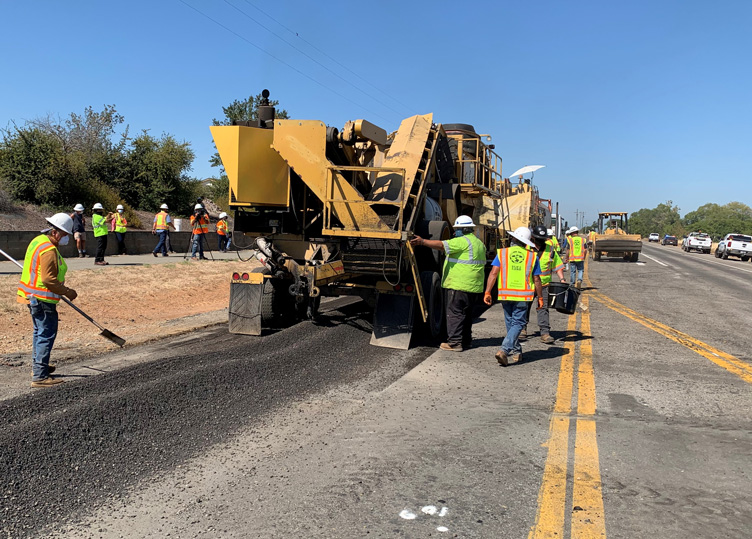Federal, state, and local infrastructure funding yields nearly $200 billion in economic activity in California and creates 700,000 jobs each year for the Golden State, according to a new report from the American Road & Transportation Builders Association (ARTBA).
In the next 10 years, government investments in California’s transportation infrastructure will grow from $40.4 billion in 2021 to $52.6 billion in 2030. That means that every $1 spent on infrastructure in California creates $4.30 in economic activity, ARTBA said.

“With California so dependent on transportation infrastructure, our research shows that investment in roads, bridges and transit systems clearly yields significant benefits, helping underwrite the Golden State’s continuing economic expansion,” said ARTBA Chief Economist Dr. Alison Premo Black, who conducted the research.
The release of “The Economic Impacts of Highway, Street, Bridge, & Transit Investment in California” is accompanied by the launch of a new, searchable online database that breaks down the economic benefits of infrastructure spending in every California county.
“There’s no question that construction, maintenance, and operation of California’s highway, street, bridge, and transit infrastructure is a major economic driver that benefits every sector of the economy,” said Michael Quigley, executive director, California Alliance for Jobs. “This is a groundbreaking report that, for the first time, takes all transportation revenue streams into account – local, state, federal – and quantifies the economic benefits of these investments on California and local economies.”
According to ARTBA, California highway, street, bridge, and transit investment will support $200 billion in annual benefits over the next decade, including:
- Generating nearly $101.5 billion annually in economic output as businesses throughout the economy sell goods and services to both other businesses and consumers – totaling $1 trillion over 10 years.
- Contributing $52 billion per year to the Gross State Product (GSP), adding up to $520 billion over 10 years. This accounts for nearly 2% of total GSP.
- Supporting nearly 700,000 jobs on average each year throughout the economy, with 86% of the employment outside of the construction industry. This includes an estimated 220,000 jobs in transportation and warehousing, 80,000 jobs in manufacturing and trade, and 68,000 jobs in professional and business services.
- Earnings for workers of nearly $30.3 billion in wages annually, totaling $303 billion over 10 years.
- Adding $21.2 billion in tax revenues each year, totaling as much as $212.2 billion over 10 years. This includes $6 billion in annual state and local tax revenue from payroll, business, income, sales and use taxes, totaling $60.9 billion over 10 years, and $15 billion in annual federal payroll, income, and business taxes, totaling $151.3 billion over 10 years.
The economic activity is driven by construction spending as well as expenditures on transit operations, planning and design work, right-of-way purchases, construction support, administration, and research.
The report was released by the California Alliance for Jobs (CAJ), California Transit Association (CTA), California State Association of Counties (CSAC), and the League of California Cities (Cal Cities). County by county breakdowns of economic benefits and job creation are available on the website.
The ARTBA report uses a series of sophisticated models to quantify both the immediate economic activity from increased highway, street, bridge, and transit program spending levels in California and the longer-term user benefits that accrue from improving the transportation system.
